Huevos Benedictinos and a Bloody Maria for Barbara
Huevos rancheros! Ranch Eggs! If you grew up anywhere near the Southwest USA, this would be part of your Mexican or Tex-Mex vocabulary.
My first foray into the deep dark secrets of preparing huevos rancheros was in the same kitchen that Larry Thompson revealed his method of toasting sesame seeds, only this time Barbara Grove was in charge. Taking charge is second nature to Barbara.
Early in Barbara’s career as an oboist, she was performing with the University of Texas Symphony Orchestra, and on this day two of her dear friends were in the audience. The time came for Barbara to sound the “A” and the orchestra to tune. Out of the raucous cacophony of an orchestra warming up emerges an unwavering A-440 from Barbara’s oboe. The orchestra quietened and joined her on the tuning tone. Barbara’s friend turned to her husband and said in a stage whisper, “Isn’t that just like Barbara to get everyone organized and so quickly?”
Barbara and I have been close friends for decades. I watched her children grow up. Over the years we have shared music, laughter, tears, friends and, of course, food. Being in her company just feels right, everything is at ease.
She grew up in Brownsville, Texas, across the Mexican border from Matamoros, Tamaulipas, Mexico. This is at the very bottom tip of Texas. Mexican food was taken for granted there. Making huevos rancheros, tacos and enchiladas without recipes was natural for Barbara.
Barbara prepared heuvos rancheros by making a poaching sauce from tomatoes, tomato sauce, jalapeños, onions and garlic. First onions and garlic were sautéed in a little oil, then the chiles and finally heating the tomatoes and sauce to a simmer. Fresh eggs were carefully broken into the sauce to poach and then all was spooned over tortillas.
Memories of Barbara’s food haunts me from time to time. She once made a shrimp creole that was absolutely one of the best things I have ever eaten. She was using a recipe this time, one from Paul Prudhomme’s Louisiana Kitchen. It involved making a seafood stock with the heads and shells of the shrimp. I took a whiff and doubted its benefit in the recipe. To me, it had an offensive smell. Now Barbara was doubtful. Her husband, Jimmy, said to use it anyway. Lucky for us that she followed his advice. It was memorable. And, after all, who am I to doubt a Paul Prudhomme recipe … or Barbara?
My vision of the huevos benedictinos recipe has changed so many times from something more like Barbara’s heuvos rancheros to the benedict style. It all solidified this week when I spied a recipe in the May issue of Bon Appétit for Poached Eggs with Tomatillo Sauce, Poblano Chile Sauce and Refried Beans. I was taken by the Poblano Chile Sauce, which would be my hollandaise substitute.
Poblanos are those large, dark-green chiles in the supermarket that are most often used for chiles rellenos. They have a distinctive flavor and are seldom hot.
Sopes are simple cornmeal cakes and are sometimes called gorditas. Gordita means “fatty” in Spanish. Gorditas are usually split horizontally to make a pocket and then filled with something savory. As sopes, they are topped with a variety of goodies, most often shredded beef, chicken or pork and chopped lettuce and tomatoes. They make nice little vessels for small bites with drinks or wine before dinner.
Huevos Benedictinos on Sopes and Chorizo with Poblano Chile Sauce
Sopes adapted from an Aaron Sanchez recipe on The Food Network
Poblano Chile Sauce adapted from a Bon Appétit recipe
For the sopes:
- 2 cups (480 ml.) masa harina*
- 4 tablespoons (60 ml.) all-purpose flour
- ½ teaspoon (2.5 ml.) baking powder
- ½ teaspoon (2.5 ml.) salt
- 1½ cups (360 ml.) warm water
- oil for coating skillet
*Masa harina is finely ground corn flour. If your supermarket doesn’t carry it, look for a Mexican grocery which will stock it.
- Mix the dry ingredients in a large bowl.
- Slowly add the warm water while stirring with a mixing spoon.
- Now it’s time to go hands on. Kneed the dough until it is thoroughly mixed.
- Traditionally, sopes are formed by taking a walnut-size ball and flattening it between a folded-over piece of plastic wrap to about ¼ inch (.64 cm.) thickness. (You can use a tortilla press too.)
- Keep covered with a slightly damp towel while you form the remainder.
- An alternate and quicker method involves rolling out the dough on a lightly floured surface and using a round cookie cutter to cut out the sopes. This is the method I used.
- Gather up the scrap dough and re-roll for more sopes.
- You will immediately notice that the sopes are delicate and prone to damage. No worries, just carefully repair any breaks.
- Heat a large cast iron skillet until moderately hot then brush lightly with some oil.
- Carefully place the sopes in the hot skillet and cook until lightly browned in spots, about 1-2 minutes per side.
- Remove to a warm platter and keep warm.
I dearly love cast iron pans. When properly cared for, they function like a fine performance automobile. My sopes slid around in this pan like hockey pucks on ice.
For the poblano chile sauce:
- 1 large fresh poblano chile, roasted, skinned, seeded and chopped
- ½ tablespoon (7.5 ml.) butter
- 2 tablespoons (30 ml.) white onion, finely chopped
- 1 small clove of garlic, finely minced
- ¾ cup (180 ml.) heavy cream
- ¼ cup ( 60 ml.) milk, whole
- Salt and freshly ground white pepper to taste
- Roast the poblano directly over a gas flame on your stove. If you have only an electric range, your option is your oven or outdoor grill. A charcoal grill is excellent as it imparts a smoky flavor to the chiles. Your goal is to char the exterior of the chiles so they will peel easily.
- My method for doing this quickly is roasting on the stovetop flame along with the aid of a blowtorch—not one of those petite crème brûlée torches; the kind you have around the house to thaw frozen pipes. This is very helpful for charring any deep crevices and the end of the chile where the stem is attached.
- When the chile is completely charred, place in a bowl with some scalding hot water and cover to let the chile steam for about 20-30 minutes.
- Don your latex or vinyl gloves to protect your hands while you peel, seed and chop the chiles.
- To peel it, hold the chile by one hand on a cutting board and scrape the charred peel away from you. It should come off with ease.
- Remove the stem end, cut the chile open and begin scraping away the seeds and any membranes.
- Chop finely.
- Melt the butter in a small, heavy-bottomed sauce pan.
- Add the onions and garlic and sauté for a few minutes.
- Add the chopped chile and continue sautéing for a couple of minutes.
- Add the cream and milk while whisking constantly.
- Bring to a boil and immediately reduce heat to a simmer.
- Simmer for a few minutes until it thickens and is reduced to about 1 cup (240 ml.).
(I strayed a bit here and whisked in about 1-2 teaspoons (5-10 ml.) of Wondra® flour for additional thickness.) - Season with the salt and white pepper.
- Transfer the sauce to a blender and purée until smooth. (Be extra careful when blending hot liquids. I cover the blender lidded jar with a heavy towel and hold it on tightly when I switch on the blender.)
- Keep the sauce warm until ready to use.
Note: You could make a hollandaise or a béchamel sauce with the poblano as well. The lightest would be a béchamel made with just milk, butter, flour and the poblano.
For the chorizo:
- 1 pound (454 gr.) of your favorite chorizo or make your own. Zenner’s in Portland makes one of the best.
- Form the chorizo into 8 patties.
- Cook until done in a heavy skillet.
- Set aside and keep warm.
For the poached eggs:
I have found no better method for poaching eggs than one from The Best Recipes Cookbook from the editors of Cooks Illustrated magazine.
- 8 large fresh eggs
- 1 teaspoon (5 ml.) salt
- 2 tablespoons (30 ml.) white vinegar
- Fill a 12-inch (30 cm.) skillet nearly to rim with water, add the salt and vinegar, and bring mixture to boil over high heat.
- Carefully break the eggs into 8 small-handled tea cups.
- Lower the lips of 4 of the cups into the water at once: tip the eggs into the boiling water, cover, and remove from the heat.
- Poach for 4 minutes for medium-firm yolks.
- Carefully remove with a slotted spoon to a paper towel-covered plate.
- Repeat with the remaining four eggs.
For the assembly:
- 1 large, ripe tomato, finely chopped
- ½ cup (120 ml.) cilantro, finely chopped
- Place two sopes on each plate.
- Place a sausage patty on top of the sope.
- Gently lay an egg on each sausage patty. (Gracie Allen would have fun with this step!)
- Spoon some of the poblano chile sauce over all and garnish with the chopped tomato and cilantro.
¡Bloody Maria!
Adapted from The Bartender’s Black Book
For 2 drinks:
- 4 ounces (120 ml.) Tequila*
- 1 teaspoons (5 ml.) fresh grated horseradish or 2 teaspoons (10 ml.) prepared horseradish
- 6 dashes Tabasco sauce or to taste
- 6 dashes Worcestershire sauce or to taste
- Juice of one lime
- 6 dashes celery salt
- 6 dashes of fresh ground black pepper
- 1 cup (240 ml.) tomato juice
* Several years ago I discovered that although all Tequilas are “hecho en Mexico” (made in Mexico), some lower-priced ones are imported and also bottled in the US. I always look for one that is also bottled in Mexico for the proper flavor. Sauza White margaritas are stellar when made with the Sauza bottled in Mexico, but sub-ordinary with the one bottled in the US.
- Stir all the ingredients in a large measuring cup and divide evenly over ice cubes in 2 highball glasses.
- Garnish with a lime or lemon wedge, cucumber or a cocktail shrimp.
The original recipe called for the following optional ingredients. Vic and I tasted it with them and agreed we would not include in future Bloody Marias. We prefer the more traditional.
- 2 ounces (60 ml.) clam juice (optional)
- Dash of sherry (optional)
- 2 teaspoons (10 ml.) Dijon mustard (optional)
Sip and enjoy your trip to sublimity.
¡Bueno apetito!
— Charles
Category: Brunch/Breakfast
About the Author (Author Profile)
Music, food and photography are at the center of Charles’ life. He performed with the Dallas Symphony, Dallas Opera and was assistant principal bassoonist with the Fort Worth Symphony for more than 20 years. When Charles and Victor moved to Baltimore, Charles created Lone Star Personal Chef and Catering Service and taught cooking classes at Williams-Sonoma. Now in Salem, Charles is a Realtor with Coldwell Banker Mountain West Real Estate, taught cooking classes for children at the A.C. Gilbert Discovery Village, and owns and operates Charles Price Photography. Charles and Vic enjoy entertaining and frequently host dinners as fundraisers for local non-profits and charities








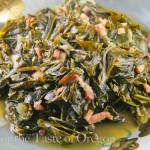
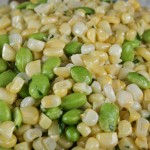
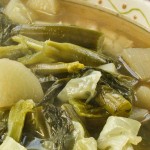


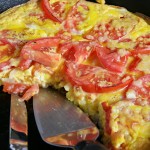
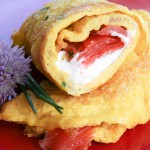


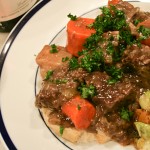
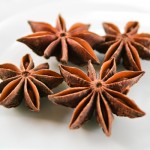

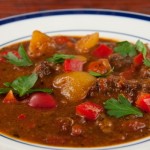

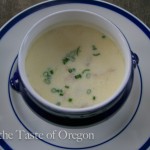
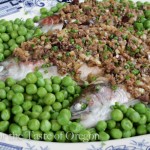
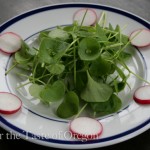





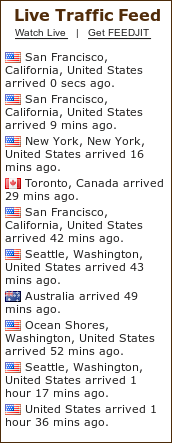






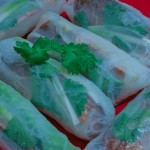
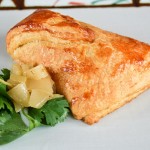
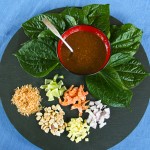

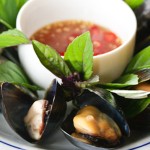

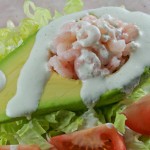
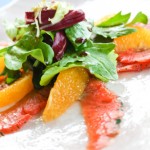
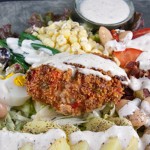
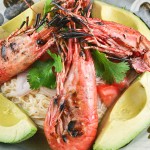


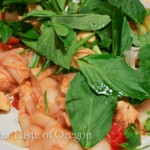
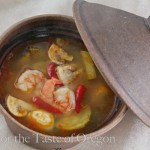
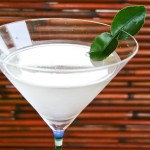
You are making me so hungary… I didn’t know that Sunday not only were you making Bloody Marias, but you were probably making this too!
Nice work Charles & Victor. Love your blog!!
Sorry to be so tardy responding to your wonderful post! Lots of great memories surrounding loving friendship over many years AND always food was an essential part of that! My children love you dearly!
Thank you for being such a wonderful part of our lives! Buen provecho!
Barbara